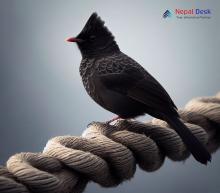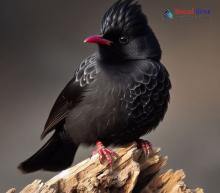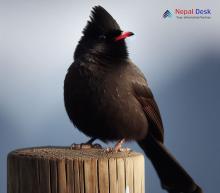Nature captivates us with its various fascinating creatures, each boasting its own special traits and adaptations. A group of birds that truly catches our attention is the Hypsipetes genus. These amazing avian species have evolved over millions of years, exhibiting unique features, thriving in diverse environments, and even gracing the lush landscapes of Nepal with their presence. In this article, we'll explore everything about the Hypsipetes genus – their evolution, features, habitats, and how they have made a home in Nepal.
Understanding the Hypsipetes Genus Evolution
These enchanting birds are part of the Pycnonotidae family, commonly known as bulbuls – a group of passerine birds mainly found across Asia and Africa. It's believed that Hypsipetes began to evolve some 20-30 million years ago. Over time, they branched out into various species through mechanisms like vicariance and adaptive radiation. Molecular data indicate that this incredible diversification has led the Hypsipetes genus to adapt to numerous habitats throughout Asia.
Unveiling Hypsipetes Species Features
Birds within the Hypsipetes genus come in a variety of sizes and colors but share certain physical traits. They typically have slender bodies with long tails and strong legs designed for perching. Most species display dull plumages in shades of grey or brown; however, some species might show off bright colors in their feathers. A standout feature is a striking crest on their head which they can raise or lower based on mood or behavior. Their sharp beaks allow them to forage for insects and fruits effectively.
Ecology: Habitats and Lifestyles
Hypsipetes birds can be found across diverse ecological niches throughout Asia – from dense forests to city gardens. They flourish in lowland areas as well as mountainous regions up to around 1,500 meters in elevation. These birds are generally frugivorous or omnivorous, enjoying a diet of fruits, insects, seeds, and nectar. Their dietary preferences play a key role in seed dispersal for numerous plant species. Hypsipetes are celebrated for their melodious songs and alert calls, which add significantly to the acoustic diversity within their habitats.
Nepal's Hypsipetes Wonderland
Boasting an incredible variety of birdlife, Nepal is home to two primary Hypsipetes species – the Black Bulbul (Hypsipetes leucocephalus) and the White-headed Bulbul (Hypsipetes thompsoni). They dwell in a myriad of ecosystems across Nepal's distinct physiographic zones. The eastern Himalayas foothills, subtropical lowland forests (Terai), and mid-montane forests all host these exquisite birds. Conservation initiatives strive to protect the habitats frequented by these Hypsipetes members as well as countless other plant and animal species.
To wrap up, learning about the Hypsipetes genus' evolution, features, ecology, and presence in countries like Nepal broadens our understanding of their significance in maintaining ecological balance. These mesmerizing birds embellish our planet with their captivating charm and deserve our utmost care and protection for future generations to cherish.




